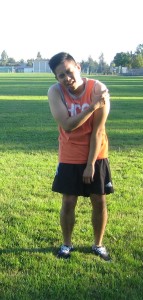The acromioclavicular joint (AC joint) is positioned on top of the shoulder where the collarbone ends. This joint is comprised of the bones of the clavicle and the acromion. In most sports injuries, the acromioclavicular joint is usually damaged by falls directly on the shoulder or an extended arm particularly in karate or football.
The AC joint forms where the collarbone and the peak of the shoulder blade or acromion encounter. The joint capsule and various ligaments provide the joint with stability. Always bear in mind that the acromioclavicular joint enables increased movement of the shoulder blade as well as the rotation of the shoulder.
Potential injuries on the acromioclavicular joint
The usual cause for the separation of the AC joint is a fall directly onto the shoulder that damages the ligaments responsible for surrounding and stabilizing the joint.
The severity of damage sustained on the supporting ligaments determines the grade of injury on the joint.
- Grade I – indicates minimal displacement of the joint with minor stretching of the ligaments
- Grade II – the acromioclavicular joint completely tears which leads to a more evident separation of the joint.
- Grade III – the acromioclavicular ligament, coracoclaviclar ligaments as well as the capsule that surrounds the joint are torn
What are the symptoms?

Injuries to the AC joint can result to immediate pain and a certain degree of dysfunction.
- With a grade I injury, there is pain directly on the AC joint along with localized swelling and minimal pain during arm movement.
- Grade II injuries involves pain at the joint that is more severe along with swelling and resistance in moving the arm. There is also a small-sized lump perceivable in the area where the acromion and clavicle are no longer aligned.
- In grade III injuries, the individual usually supports the elbow while holding the arm close to the side. There is evident disfigurement and instability of the joint.
Management
Most cases of grade I-III injuries are managed conservatively with immobilization under a sling for 2-6 weeks until the pain fully subsides. The application of cold and pain medications is also used to manage the initial pain.
Once the individual can tolerate it, a rehabilitation program is started in order to restore full shoulder range of motion and strength. The individual can resume his/her sport as long as there is full and pain-free range of motion and no tenderness upon touching the AC joint and when manual traction does not initiate pain.
Surgery
Surgery might be needed if the pain persists after 2-3 months in the acromioclavicular joint during overhead activity or while engaging in contact sports.
Some doctors might decide to perform surgery on a grade III injury right away if needed. In some cases, arthritis of the joint might develop if substantial degree of instability lingers after the injury. In such cases, surgery is required in order to remove the end of the clavicle.
